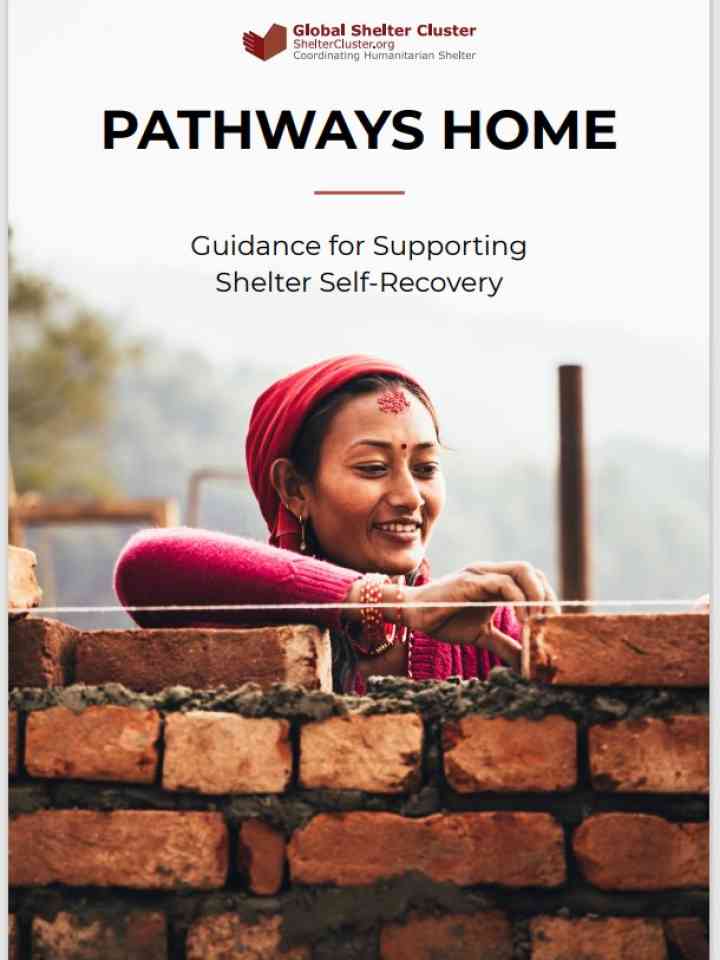Pathways Home - Guidance for Supporting Shelter Self-Recovery
The aim of Pathways Home is to describe and explore the concept of supporting shelter self-recovery, and provide practical guidance on how to accompany and support the process in post-disaster and post-conflict contexts. It represents the first attempt to outline the rationale, building blocks and key concepts of self-recovery. Drawing from shelter programming experience and suggested best practice, the Guidance aims to inform the design of programmes that support shelter self-recovery to help build a common body of knowledge.
The Guidance aims to explain a vision of shelter assistance that goes beyond the ‘participation revolution’ called for in the 2016 Grand Bargain. This vision suggests a genuine people-led approach to supporting recovery where power and control remain in the hands of affected populations. A supporting shelter self-recovery approach gives humanitarian organizations the potential to do more with less.
A disconnect exists between discussions about supporting self-recovery at a global level and the reality of what organizations are currently doing and can reasonably do in practice. Past shelter projects show that components of a ‘self-recovery approach’ are often apparent in larger holistic programmes or combined with more conventional shelter interventions, but are rarely an explicit focus. The Guidance attempts to capture good programming practice for supporting shelter self recovery with an emphasis on those key elements that need close attention or that differ from conventional shelter programming.
Explore further
